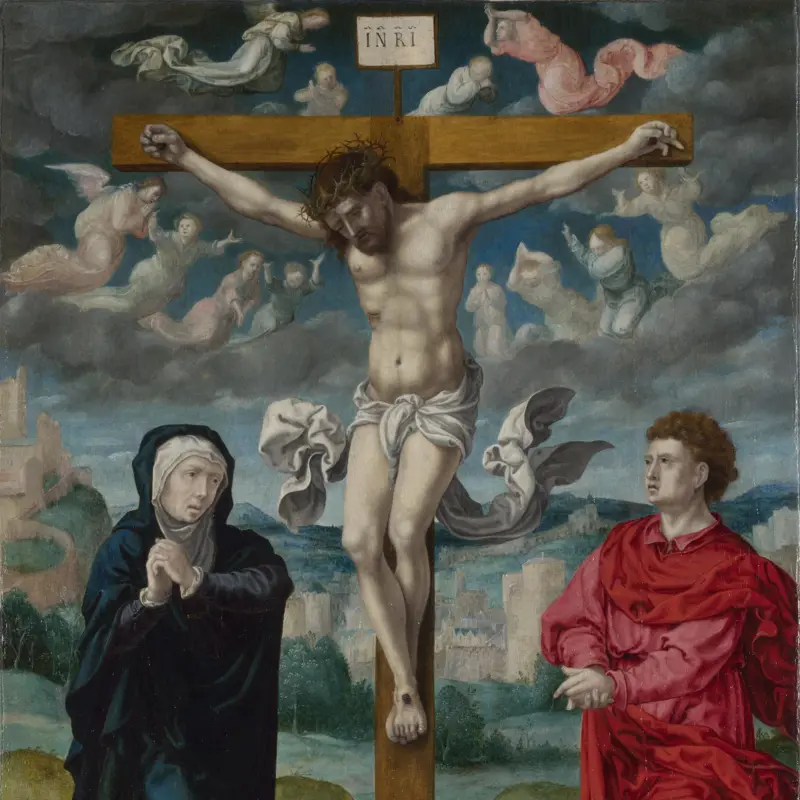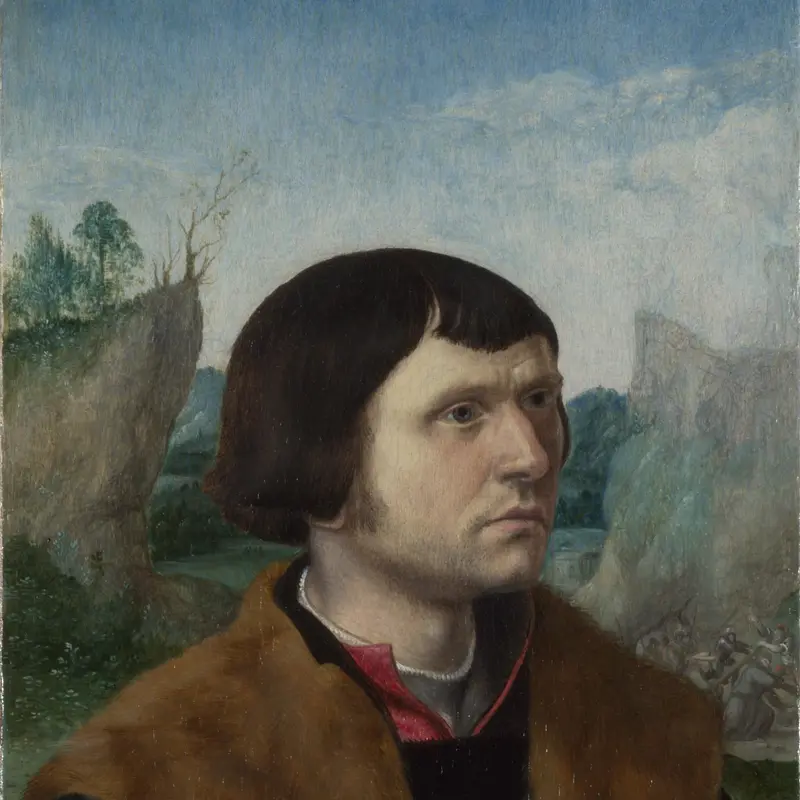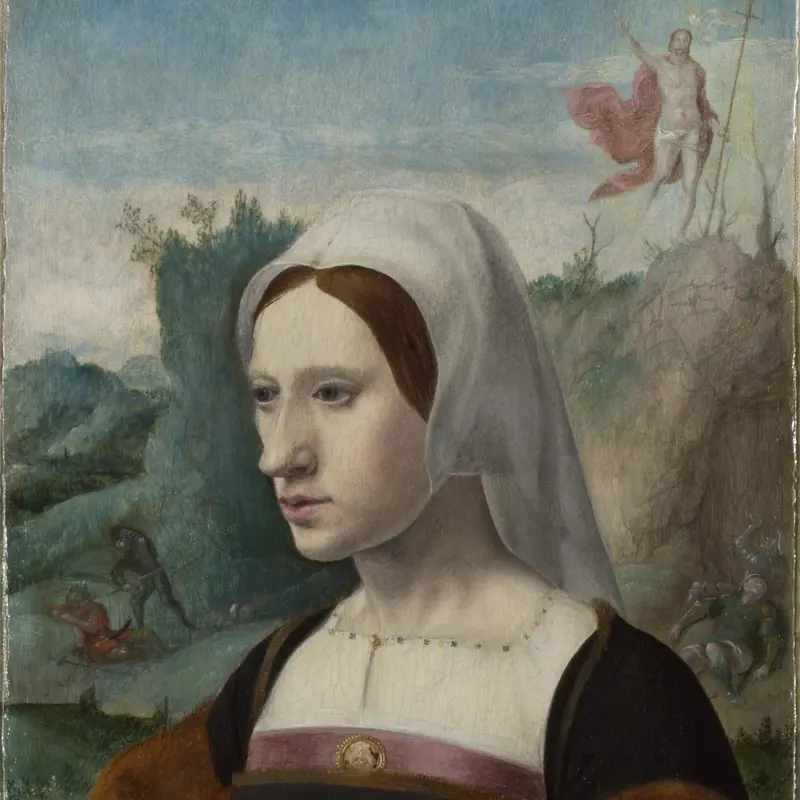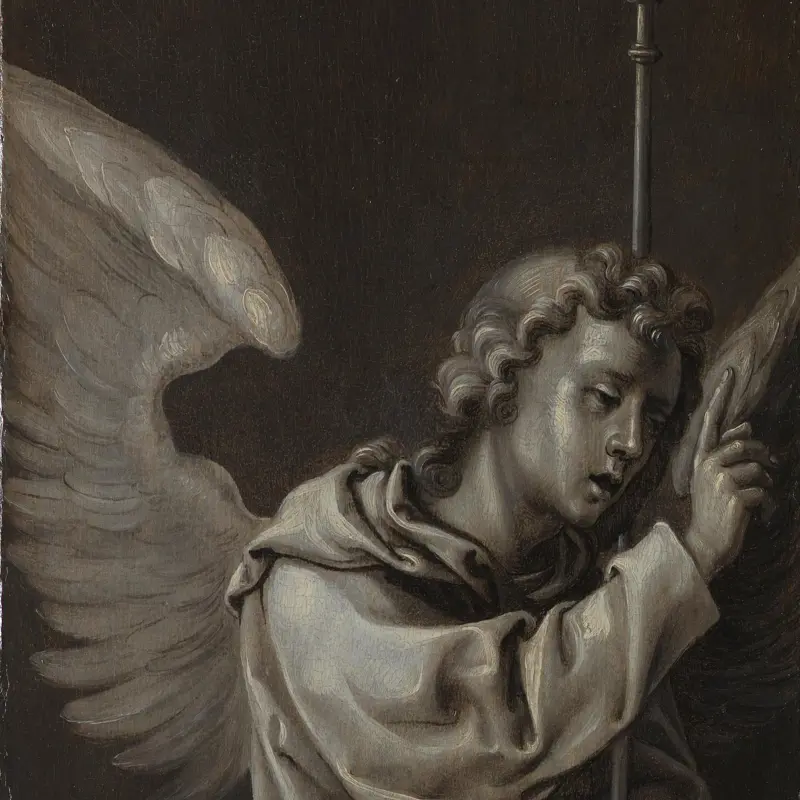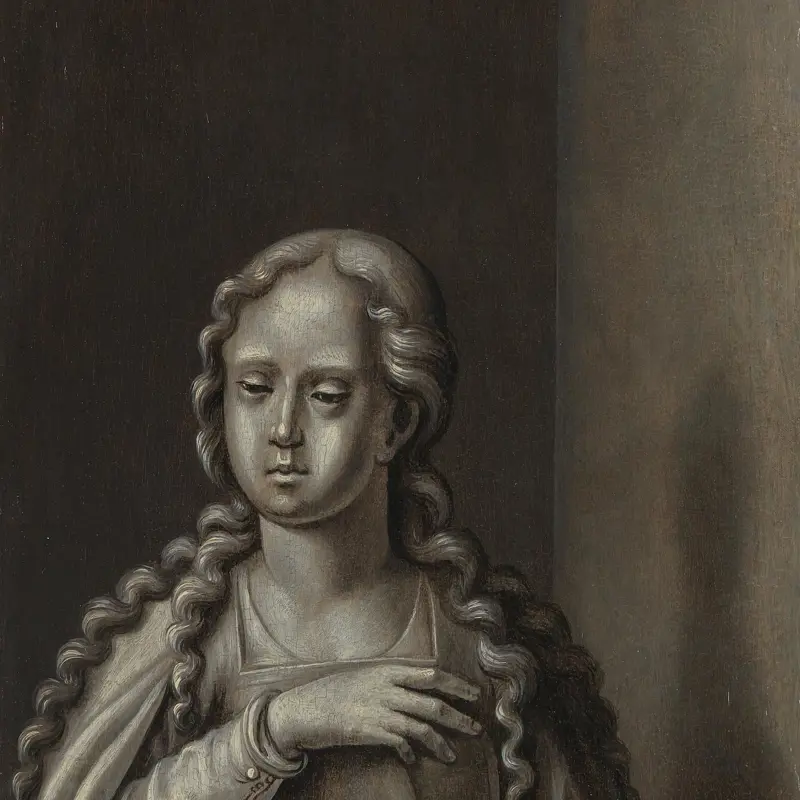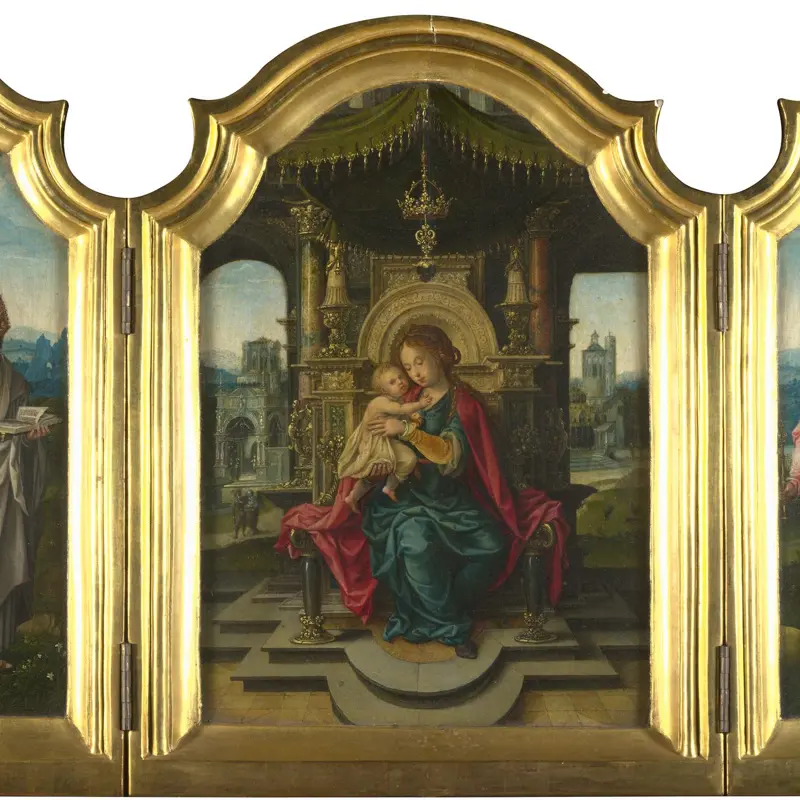Workshop of Pieter Coecke van Aalst, 'The Virgin Annunciate: Reverse of Right Hand Shutter', probably 1527-30
About the work
Overview
This painting appeared on the outside of the right wing of an altarpiece possibly made for a member of the Bollis family of Sint-Truiden. It is painted in grisaille (in shades of black, white and grey) and would have been visible when the altarpiece was closed.
The Virgin Mary rises and turns to greet the Archangel Gabriel, who appears on the opposite wing; she has shut the book she had been reading. Together, the two wings showed the Annunciation – the moment Gabriel told Mary she would bear a child.
The whole triptych (painting in three parts) was probably produced in the workshop of Pieter Coecke van Aalst. It bears some resemblance to an Annunciation painted in Coecke’s workshop for Willem van Brussel, Abbot of St Trudo, between 1516 and 1532. The wings have been split; this painting remains on its oak panel. An image of the female donor (also in our collection) was originally on the inside.
Key facts
Details
- Full title
- The Virgin Annunciate: Reverse of Right Hand Shutter
- Artist
- Workshop of Pieter Coecke van Aalst
- Artist dates
- 1502 - 1550
- Part of the series
- The Crucifixion Triptych
- Date made
- Probably 1527-30
- Medium and support
- Oil on wood (Baltic/Polish oak, identified)
- Dimensions
- 76.2 × 21.7 cm
- Acquisition credit
- Bequeathed by Mrs Joseph H. Green, 1880
- Inventory number
- NG1088.5
- Location
- Not on display
- Collection
- Main Collection
- Previous owners
Provenance
Additional information
Text extracted from the ‘Provenance’ section of the catalogue entry in Lorne Campbell, ‘National Gallery Catalogues: The Sixteenth Century Netherlandish Paintings: With French Paintings before 1600’, London 2014; for further information, see the full catalogue entry.
Bibliography
-
1945Davies, Martin, National Gallery Catalogues: Early Netherlandish School, London 1945
-
1955Davies, Martin, National Gallery Catalogues: Early Netherlandish School, 2nd edn (revised), London 1955
-
1987Davies, Martin, National Gallery Catalogues: The Early Netherlandish School, 3rd edn, London 1987
-
2001
C. Baker and T. Henry, The National Gallery: Complete Illustrated Catalogue, London 2001
-
2014
L. Campbell, National Gallery Catalogues: The Sixteenth Century Netherlandish Paintings: With French Paintings before 1600, 2 vols, London 2014
About this record
If you know more about this work or have spotted an error, please contact us. Please note that exhibition histories are listed from 2009 onwards. Bibliographies may not be complete; more comprehensive information is available in the National Gallery Library.
Images
About the series: The Crucifixion Triptych

Overview
Two donors – husband and wife – kneel in the wings of this triptych (a painting in three parts) and gaze at the Crucifixion in the central panel. The Annunciation – the moment the Virgin Mary was told she would bear a child – was originally painted in shades of grey on the outside of the wings, but the fronts and backs are now physically separate.
The style of the painting associates it with the work of Bernaert van Orley and especially his pupil, Pieter Coecke van Aalst. Coecke seems to have run a large workshop and several artists of limited ability seem to have been involved in this painting. This image of the Crucifixion was evidently a popular composition: several versions of it survive.

